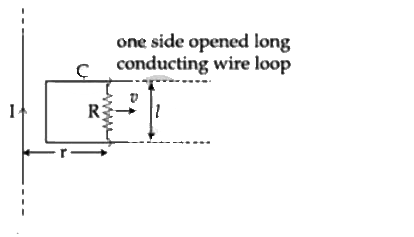The resistance of a straight conductor does not depend on its
length
temperature
material
shape of cross - section
The correct Answer is:D
To solve the question regarding the factors that do not affect the resistance of a straight conductor, we can follow these steps:
1. Understanding Resistance:
- Resistance (R) is the opposition to the flow of electric current in a conductor. It is influenced by several factors.
2. Resistance Formula:
- The resistance of a straight conductor can be expressed with the formula:
R=MLANe2τ
- In this formula:
- M = mass of the electron (constant)
- L = length of the conductor
- A = cross-sectional area of the conductor
- N = number density of charge carriers (depends on the material)
- e = charge of the electron (constant)
- τ = relaxation time (depends on temperature)
3. Factors Affecting Resistance:
- From the formula, we can see that:
- Resistance depends on the length of the conductor (L).
- Resistance depends on the cross-sectional area (A).
- Resistance depends on the nature of the material (N).
- Resistance depends on temperature (through τ).
4. Identifying Non-Dependent Factors:
- The question asks for what the resistance does not depend on.
- The formula shows that resistance does not depend on the shape of the conductor.
- Therefore, the correct answer to the question is that the resistance of a straight conductor does not depend on its shape.
Conclusion:
The resistance of a straight conductor does not depend on its shape.
---
- Resistance (R) is the opposition to the flow of electric current in a conductor. It is influenced by several factors.
- The resistance of a straight conductor can be expressed with the formula:
R=MLANe2τ
- In this formula:
- M = mass of the electron (constant)
- L = length of the conductor
- A = cross-sectional area of the conductor
- N = number density of charge carriers (depends on the material)
- e = charge of the electron (constant)
- τ = relaxation time (depends on temperature)
- From the formula, we can see that:
- Resistance depends on the length of the conductor (L).
- Resistance depends on the cross-sectional area (A).
- Resistance depends on the nature of the material (N).
- Resistance depends on temperature (through τ).
- The question asks for what the resistance does not depend on.
- The formula shows that resistance does not depend on the shape of the conductor.
- Therefore, the correct answer to the question is that the resistance of a straight conductor does not depend on its shape.
The resistance of a straight conductor does not depend on its shape.
Similar Questions
The resistance of a conductor depends on its
View SolutionIn the following question a statement of assertion (A) is followed by a statement of reason (R )
A : Electric potential of a positively charged body may be negative.
R : The potential of a conductor does not depend on the charge of the conductor.
View Solution
Knowledge Check
The electrical resistance of a conductor depends upon
Asize of conductorBtemperature of conductorCgeometry of conductorDall of these
The capacitance of a capacitor does not depend on
View SolutionThe resistance of a metallic conductor increases with temperature due to.
View SolutionEfficiency of the catalyst does not depend on its?
View Solution(a) Draw magnetic field lines of a bar magnet. "Two magnetic field lines never intersect each other." Why ?
(b) An electric oven of 1.5 kW is operated in a dometic circuit (220V) that has a current rating of 5A. What result do you expect in this case ? Explain .
or
Which is meant by resistance of a conductor ? Name and define its SI units. List the factors on which the resistance of a conductor depends. How is the resistance of a wire affected if −
(i) its length is doubled , (ii) its radius is doubled ?
View SolutionResistivity of a semiconductor depends on
View SolutionAn infinitely long straight wire carrying current I , one side opened rectangular loop and a conductor C with a sliding connector are located in the same plane , as shown in the figure. The connector has length l and resistance R . It slides of the right with a velocity v. The resistance of the conductor and the self inductance of the loop are negligible . The induced current in the loop , as function of separation r between the conductor and the straight wire is :

View Solution(a) At what temperature would the resistance of a copper conductor be double of its value of 0∘C? (b) Does this same temperature hold for all copper conductors, regardless of shape and size? [αc=4.0×10−3.∘C−1]
View Solution
